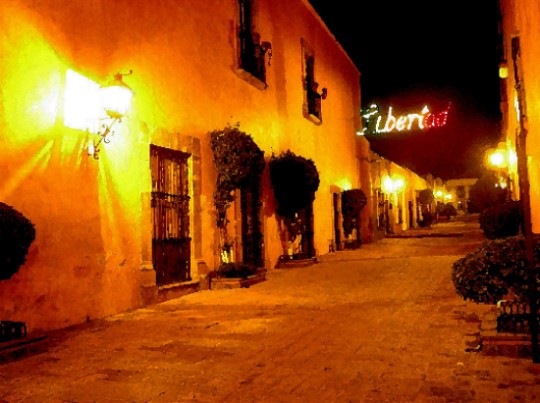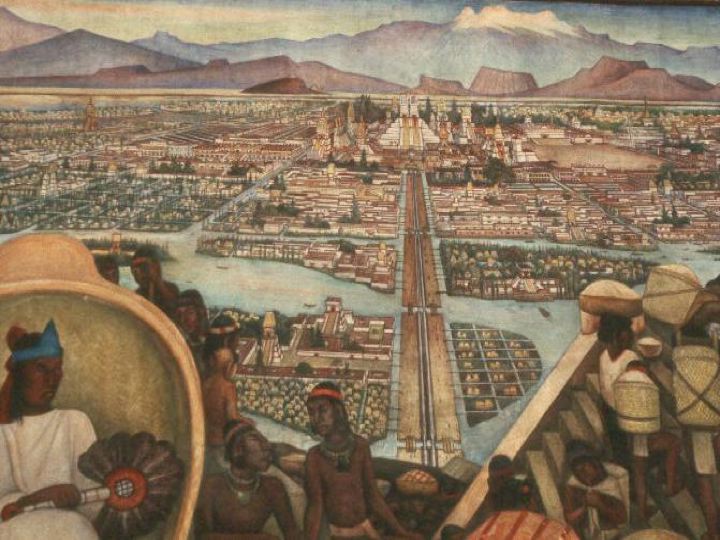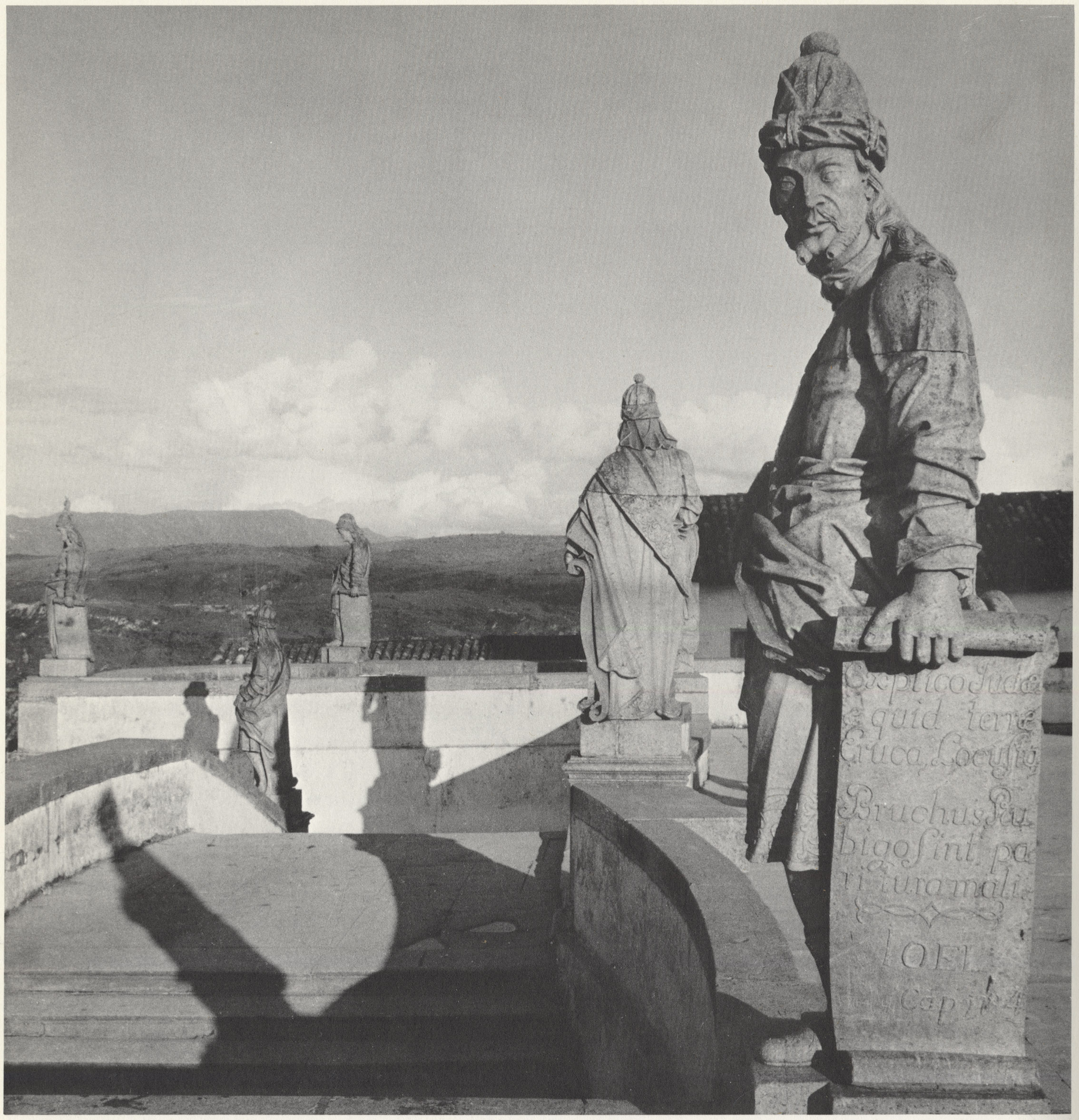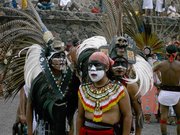Introduction
Welcome!
Latin American Humanities is a two-semester course sequence that provides a rigorous introduction to Latin American literature and culture. It is part of Columbia College’s core curriculum and fulfills its major cultures requirement. Representative works of Latin American literature, history, anthropology and art are read and discussed in class. The course explores the great themes and preoccupations that have helped shape Latin America from the 15th century to today.
Latin American Humanities I, taught in the fall, begins in the late fifteenth century, when Portuguese and Spanish sailors were sailing both West and South in an effort to find trade routes to India, and ends with the late nineteenth-century literary movement of modernismo. Some of the topics discussed in class are conquest and colonialism, writing as a tool of empire and resistance, authorship and authority, mestizo discourses, the colonial baroque, slavery, the discourses of national foundation, and the idea of a peripheral modernity in Latin America.
|
|
Fading liberty in Querétaro, Mexico. Photo by Francisco Mari. |
Latin American Humanities II, offered in the spring, runs from the 1880s to today and covers modern Latin American cultures and literatures after the foundational period of nation formation. The overarching concern will be to see how notions of Latin American culture were negotiated at certain historical turning points by different agents such as writers, artists, and politicians. Among the themes and topics examined will be positivism and cosmopolitanism, the close and contentious relationship between art and political engagement during the Mexican and the Cuban Revolution, the Boom of Latin American literature in the 1960s, and the military dictatorships of the 1970s. We end by considering challenges to gender and migration in the late twentieth century.
LAH I and LAH II can be taken sequentially or by themselves. For a comprehensive overview of the material we recommend the full two-semester sequence.
Syllabus
Latin American Humanities I
|
|
Diego Rivera, The great city of Tenochtitlán. National Palace, Mexico. 1925-35. |
I.
Indigenous America and Iberia (Sessions 1-3)
Jews, Muslims and Christians
in Spain at the time of the Catholic Kings. The Portuguese trading empire.
Civilizations of Mesoamerica. Writing systems. The city of Tenochtitlán.
First encounters between Europeans and Americans.
Readings:
Popol Vuh. Mayan Book of the Dawn of Life and the Glories of Gods and Kings. (sel.)
Christopher
Columbus, “Letter to Santangel”; “Third Voyage”.
Letter of Pedro Vaz de Caminha
to King Manuel of Portugal.
II. Perspectives on the Conquest of Mexico (Sessions 4-7).
The politics of conquest: Conquerors' accounts and negotiations.
Early debates on the nature of the Indian. Translation and the semiotics of conquest.
Readings:
Hernán Cortés, “Second Letter.”
Las Casas, A Short Account of the Destruction of the Indies.
Juan Ginés de Sepúlveda, Democrates Alter (sel.).
Bernal Díaz del Castillo, The Conquest of New Spain.
Tzvetan Todorov, The Conquest of America (sel.)
III. Anti-heroic Conquests (Sessions 8-9)
Indigenous responses to the conquest. A shipwreck's account: Cabeza de Vaca in Florida
Readings:
Bernardino de Sahagún, The War of Conquest.
Cabeza de Vaca, Castaways.
IV. Perspectives on the Inca Empire and the Conquest of Peru (Sessions 10-11)
Introduction to Andean cultures and the Inca Empire. The first mestizo accounts.
Readings:
Williamson, History of Latin America (sel.)
Inca Garcilaso de la Vega, Royal Commentaries (sel.)
Artwork: Drawings from Felipe Guaman Poma de Ayala, Letter to a King.
|
|
Aleijadinho, The 12 Prophets. Bom Jesus de Matosinhos, Brazil. Photo: Hans Mann |
V. Mestizos and Creoles (XVI-XIX) (Sessions 12-17):
Colonial administration. The viceroyalties of the 17th and 18th centuries. New World Baroque. Midterm. Women and education in colonial America. Colonial conceptions of race
Readings:
J.H. Elliot, “Spain and America in the 16th and 17th centuries.”
Sor Juana, poems and “Reply”.
Catalina de Erauso, Lieutenant Nun.
Antonio Vieira, “Sermon.”
Film: I, the Worst of All.
Artwork: New World Baroque. Casta-paintings.
VI. Independence (Sessions 18-20)
Simón Bolívar's vision for independent America. Civilization and barbarism in Argentina and Chile, ca. 1830. Brazil: from colony to empire.
Readings:
Pedro I, “Declaration of Independence.”
Simón Bolívar, “Jamaica letter,” “Angostura Discourse.”
Sarmiento, Facundo (sel.)
Film: The Buried Mirror IV.
VII. The Slave Trade (Sessions 21-24)
Slavery and the international abolitionist movement. Romantic representations of Indians and slaves.
Readings:
Manzano, Autobiography of a Runaway Slave.
Gertrudis Gómez de Avellaneda, Sab.
Film: Quilombo.
VIII. The shaping of “Latin” America. (Sessions 25-26)
The idea of America. The poetics and politics of Modernismo.
Conclusion.
Readings:
José Martí, "Our America" and other essays.
Rubén Darío, poems.
Latin American Humanities II
I. Moving Toward the Twentieth Century: Modernismo/Modernity (Sessions 1-4)
Latin American modernity. Positivism in Brazil, Rodó’s Ariel: between theories of imperialism and language politics
Readings:
Machado de Assis: “The Psychiatrist.”
Euclides da Cunha: Revolt in the Backlands (sel.).
Jose Enrique Rodó: Ariel.
Roberto Fernández Retamar: “Calibán.”
II. The Mexican Revolution and its Aftermath (Sessions 5-8)
The cientificos and Mexico under Porfirio Díaz. Land disputes. The Revolution, education and the arts. The Mexican Muralists
Readings:
Mariano Azuela, The Underdogs.
Octavio Paz, The Labyrinth of Solitude.
José Vasconcelos, The Cosmic Race (sel.)
Film: Viva Zapata
Artwork: Murals by Diego Rivera, José Clemente Orozco, and David Alfaro Siqueiros
III. Avant-garde Movements: Between Aesthetic Innovation and Political Engagement (Sessions 9-11)
The Cannibalist Manifesto. Modernist women and early feminism. Afro-Caribbean poetry. Latin American poets in the Spanish Civil War
Readings:
Vicente Huidobro, poetry (sel.)
Osvald de Andrade's “Anthropophagist manifesto.”
Nicolas Guillén, poetry (sel.).
Selected poetry by Gabriela Mistral, Alfonsina Storni, Delmira Agustini.
Teresa de la Parra, “The Influence of Women on the Formation of the American Soul.”
Cesar Vallejo's and Pablo Neruda's war poetry (sel.)
Artwork: Representations of women in avant-garde art: Mestizas, mulatas, negras.
IV. The Magical Realist Mode (Sessions 12-16)
Surrealism and the Haitian revolution. Carpentier, Borges, García Márquez: theories and politics of magical realism. The global translation and promotion of the Latin American novel
Readings:
Alejo Carpentier, The Kingdom of this World.
Jorge Luis Borges: Ficciones. Selected essays.
Gabriel García Márquez, 100 Years of Solitude.
José Donoso, Personal History of the Boom (sel.)
V. The Cuban Revolution (Sessions 17-19)
Beginnings of the revolution. Cultural politics and censorship. Testimonial writing. Cuban cinema
Readings:
Fidel Castro, “Words to the Intellectuals.”
Selected poetry by Heberto Padilla, Nicolas Guillén, Ernesto Che Guevara.
Miguel Barnet, Biography of a Runaway Slave.
Films: P.M.; Memorias del subdesarrollo
VI. Negotiating Gender in Latin America (Sessions 20-23)
Post-Boom. Dictatorships of the 1970s. Queer identities. Late 20th century feminism
Readings:
Manuel Puig, The Kiss of the Spider Woman.
Achy Obejas, “We came all the Way from Cuba so You Could Dress Like This?”.
Luisa Valenzuela, “Tango”.
Rosario Ferré, “The Poisoned Tale.”
Nélida Piñón, “Meat Pie”.
|
|
Indigenous dancers at Teotihuacán, September 2005. Photo by Francisco Mari |
VII. Migration Cultures (Sessions 24-27)
Latino, hispano, and chicano movements. The U.S. Census Bureau. Language Politics
in the U.S.
Readings:
Ana Lydia Vega, “Cloud Cover Caribbean”.
Richard Rodriguez, “Hunger of Memory” (sel.).
Tato Laviera, AmeRican (sel.).
Film: The Blue Diner
Requirements
There will be one mid-term and one final examination. Over the course of the semester there are usually 2-3 writing assignments that make a total of 10-12 pages. Please ask your instructor for more information. Since this is not a lecture class, it is vital that students come prepared to discuss the assigned materials.
Web Resources
Here is a list of links to websites and databases that are accessible over the Columbia network. We hope that they are useful to students and instructors of Latin American literature and culture alike, whether they are preparing a class, a presentation or a seminar paper.
Pamela Graham, research librarian in Latin American Studies at Columbia, has organized materials on Latin America at the university. Her library page provides a portal into Columbia University’s extensive collections and resources.
Databases
- HAPI Online (Hispanic American Periodicals Index) is a great tool to find articles on any Latin American subject, author, or title
- The MLA database helps to find articles and books on any given subject, text, film or author. Its scope is all modern languages
Websites
- The Library of Congress has a useful website with links to resources around the world
- Another clearinghouse website for Latin American studies is LANIC
- The Humbul website is a great portal to digital collections



